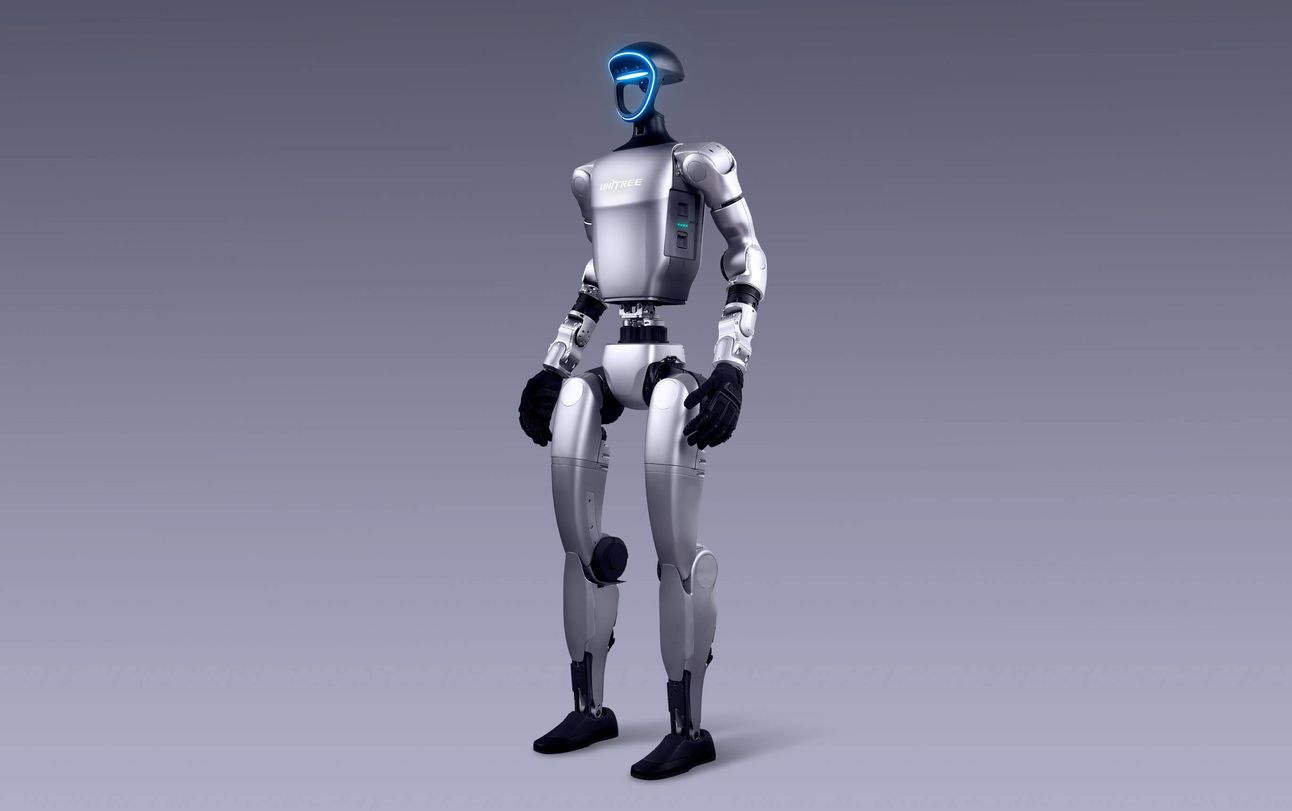Man-machine reloaded: Why the battle for humanoid robots is more than just a tech trend
Dear Readers,
Humanoid robots are no longer the stuff of science fiction—they are the new battleground for geopolitical power relations. While Elon Musk is making headlines with Optimus, companies such as Figure AI and Apptronik have long been working on a new concept of work: every robot as a fully-fledged “colleague.” In China, on the other hand, they are not dreaming, but scaling up – subsidized, efficient, and directly from Shenzhen.
What we are currently experiencing is nothing less than the dawn of a post-industrial economy. Morgan Stanley estimates the market potential at $4.7 trillion. But it's about more than money: whoever sets the standard for “physical AI” today will dictate the global rules for work, value creation, and social order tomorrow. The US is hesitating – China is marching forward.
The question is: do we want to watch or help shape the future?
In Today’s Issue:
New global tech race is here, and it's being fought with humanoid robots.
Take a front-seat view of the first complete ride in a driverless Tesla Robotaxi.
China's manufacturing power gives it a massive edge in the robotics race.
And more AI goodness…
All the best,


The Future of Humanoid Robots
The TLDR
A new global tech race has begun over humanoid robots, pitting the US against China for technological and economic supremacy. While US companies like Figure AI and Apptronik lead in developing the advanced AI "brains," China leverages massive government funding and a dominant hardware supply chain to aim for mass production as early as 2025. This battle for the future of "physical AI" will define the next era of the labor market and a global industry projected to be worth trillions.
When machines suddenly start looking like us, the next tech race begins!
Humanoid robots are considered the next big revolution—and they have long since become a geopolitical battleground.

While Elon Musk is fueling the imagination with Optimus, an entire industry is taking shape: US companies such as Figure AI, Apptronik (with Google DeepMind), and Agility Robotics are raising billions to make AI-driven humanoid robots a reality. But China is catching up – with massive government funding, a local supply chain, and the goal of starting mass production in 2025.
Morgan Stanley predicts that humanoid robots could reach a market volume of $4.7 trillion by 2050. These machines are not only intended to work in factories and care facilities, but also to transform the labor market – each robot acting as an additional worker. China has a real advantage thanks to its proximity to hardware suppliers, cost advantages, and the Shenzhen factor. In the US, developers are now calling for a national robotics strategy.

This race will not only determine economic supremacy, but also who sets the rules for the “physical AI” of the future.
Why it matters:
Humanoid robots could fundamentally change our economy and society.
Those who invest and plan strategically today will define the global technology leadership of tomorrow.
Sources:
Ad
Find out why 1M+ professionals read Superhuman AI daily.
In 2 years you will be working for AI
Or an AI will be working for you
Here's how you can future-proof yourself:
Join the Superhuman AI newsletter – read by 1M+ people at top companies
Master AI tools, tutorials, and news in just 3 minutes a day
Become 10X more productive using AI
Join 1,000,000+ pros at companies like Google, Meta, and Amazon that are using AI to get ahead.
In The News
First Autonomous Ride in Tesla's Robotaxi Captured on Video
This video documents the first complete ride in a fully autonomous Tesla Robotaxi, showcasing the vehicle navigating complex turns, traffic, and unexpected events on the streets of Austin from pickup to drop-off.
First Autonomous Ride in Tesla's Robotaxi Captured on Video
This video documents the first complete ride in a fully autonomous Tesla Robotaxi, showcasing the vehicle navigating complex turns, traffic, and unexpected events on the streets of Austin from pickup to drop-off.
Graph of the Day

The Holy Grail of Automation: Now a Robot Can Unload a Truck
A milestone in warehousing: Ambi Robotics' AmbiStack and Boston Dynamics' Stretch use AI-driven simulations and flexible grippers to autonomously unload packages weighing up to 23 kg from trucks – DHL is already doubling its performance and plans to deploy 1,000+ robots. This technology is revolutionizing logistics: safer, more efficient, with clear prospects for scaling and reducing labor.
Nvidia and Foxconn in talks to deploy humanoid robots at Houston AI server manufacturing plant
Foxconn and Nvidia are planning to deploy humanoid robots at a new AI server factory in Houston. In preparation: placing objects, plugging in cables, assembling – tasks that were previously reserved for humans. The launch is planned for Q1 2026, starting with two types of robots (bipedal and AMR). A pioneering step toward a fully automated production line.
Forget chatbots. Nvidia and OpenAI predict robots by 2027
Jensen Huang and Sam Altman predict widespread use of humanoid robots by 2027 thanks to advances in basic AI models and simulations. Nvidia is developing foundation models specifically for robotics, while Altman even believes that autonomous robots that build other robots are possible. This vision marks the transition from the laboratory to a real robot economy that could revolutionize logistics, manufacturing, and construction.
Question of the Day
Quote of the Day

Sponsored By Vireel.com
Vireel is the easiest way to get thousands or even millions of eyeballs on your product. Generate 100's of ads from proven formulas in minutes. It’s like having an army of influencers in your pocket, starting at just $3 per viral video.








